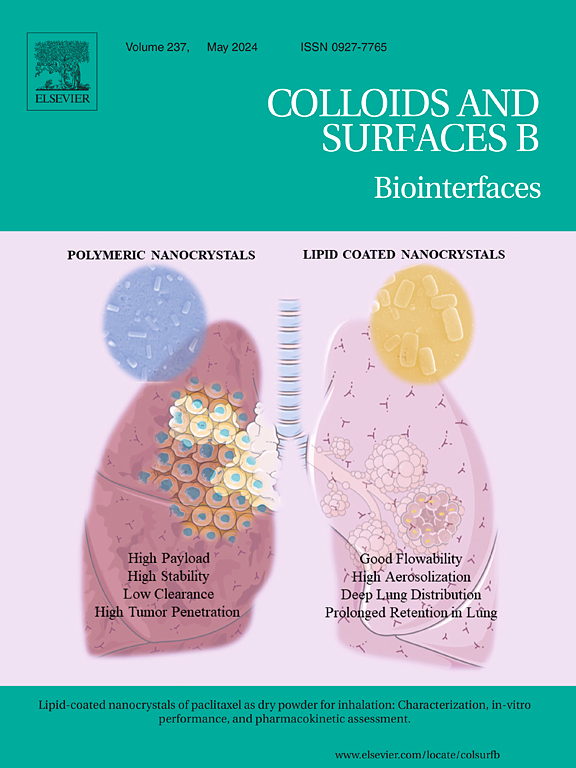Nintedanib loaded iron (III) chelated melanin nanoparticles as an MRI-visible antifibrotic drug delivery system
IF 5.4
2区 医学
Q1 BIOPHYSICS
引用次数: 0
Abstract
Idiopathic pulmonary fibrosis (IPF) is a fatal, progressive lung disease characterized by extensive scarring and thickening of lung tissue that leads to respiratory failure. Early and accurate diagnosis is crucial for monitoring disease progression and assessing therapeutic efficacy. While imaging modalities such as radiological X-rays and high-resolution computed tomography (HRCT) are commonly employed, magnetic resonance imaging (MRI) offers significant advantages, including superior soft tissue contrast and the absence of ionizing radiation. However, in lung MRIs are hindered by short transverse relaxation times, low proton density, and motion artifacts which is addressed herein by developing theranostic platform combining MRI imaging with targeted drug delivery using melanin nanoparticles conjugated with nintedanib (MNP-NIN). Chelation with ferric ions (MNP-NIN-Fe³⁺) enhanced MRI visibility enabling non-invasive imaging and drug tracking. MNP-NIN and MNP-NIN-Fe³ ⁺ nanoparticles were built with mean diameters of 189 ± 44 nm and 182 ± 35 nm, respectively and demonstrating successful NIN conjugation. Controlled NIN release followed zero-order kinetics over 36 days. MNP conjugation reduced cytotoxicity in BEAS-2B and A549 cells improving the drug's safety. MRI experiments conducted with a 7.0 T animal scanner demonstrated enhanced imaging contrast with MNP-NIN-Fe solutions compared to saline underscoring their potential for localized visualization and tracking within lung tissues. By integrating MRI diagnostics and targeted drug delivery, the MNP-NIN-Fe³ ⁺ system offers a promising solution to overcome current challenges in IPF management. This theranostic platform addresses the limitations of conventional imaging techniques while providing an innovative strategy for reducing drug-related systemic side effects and improving therapeutic efficacy.
求助全文
约1分钟内获得全文
求助全文
来源期刊

Colloids and Surfaces B: Biointerfaces
生物-材料科学:生物材料
CiteScore
11.10
自引率
3.40%
发文量
730
审稿时长
42 days
期刊介绍:
Colloids and Surfaces B: Biointerfaces is an international journal devoted to fundamental and applied research on colloid and interfacial phenomena in relation to systems of biological origin, having particular relevance to the medical, pharmaceutical, biotechnological, food and cosmetic fields.
Submissions that: (1) deal solely with biological phenomena and do not describe the physico-chemical or colloid-chemical background and/or mechanism of the phenomena, and (2) deal solely with colloid/interfacial phenomena and do not have appropriate biological content or relevance, are outside the scope of the journal and will not be considered for publication.
The journal publishes regular research papers, reviews, short communications and invited perspective articles, called BioInterface Perspectives. The BioInterface Perspective provide researchers the opportunity to review their own work, as well as provide insight into the work of others that inspired and influenced the author. Regular articles should have a maximum total length of 6,000 words. In addition, a (combined) maximum of 8 normal-sized figures and/or tables is allowed (so for instance 3 tables and 5 figures). For multiple-panel figures each set of two panels equates to one figure. Short communications should not exceed half of the above. It is required to give on the article cover page a short statistical summary of the article listing the total number of words and tables/figures.
 求助内容:
求助内容: 应助结果提醒方式:
应助结果提醒方式:


